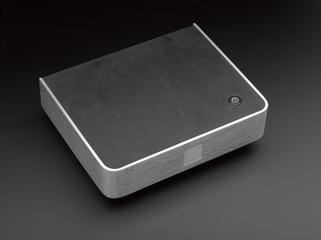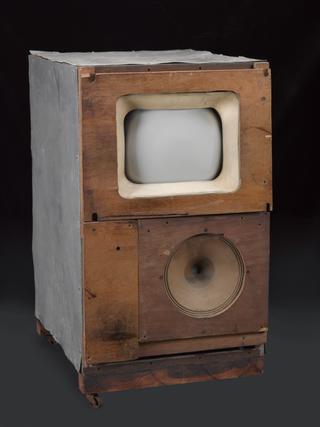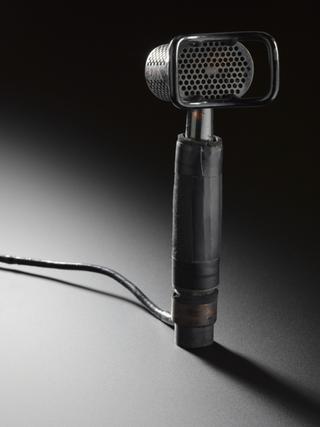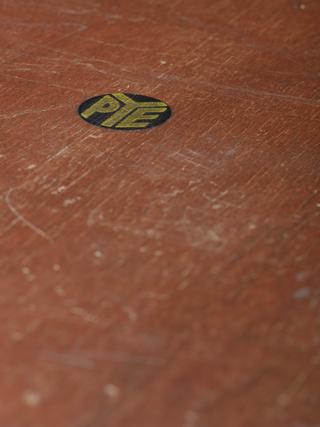
Raytheon Model M-1601 console television receiver
- Made:
- 1950 in United States










The Donald Fleming Collection of North American television receivers: Raytheon Model M-1601 C-1602, 17" console television receiver, 1949. 'Washing Machine' (circular screen or 'porthole') Type Set. Very unusual looking set to Europeans used to oblong screens.
A Raytheon Model M-1601 console television receiver, made in the United States in 1950.
The 16 inch circular screen on this American television looks unusual to us. Most cathode ray tubes at this time had circular faces, on which a rectangular picture was produced. In Europe it was normal to fit a rectangular mask to the front of the screen to hide the unused parts of the tube face. However 'porthole' sets like this became popular for a time in the United States. Many of them had an 'opera glass' or 'Tele-Zoom' control - to quote the advertisers: ‘The face of every television screen is circular. The standard rectangular picture wastes a large part of any screen on which it is seen. Tele-Zoom provides a circular picture which fills the entire screen. While this cuts off the corners and sides of the transmitted rectangular scene, it enlarges what is seen 2-1/4 times. Since most important material is near the center of the picture, little of interest is lost, while the main feature becomes even larger than it normally is on the next size larger tube.’
Raytheon closed its television operations in 1957.
Details
- Category:
- Television
- Object Number:
- 2001-5155
- Materials:
- wood (unidentified), metal (unknown), glass, brass (copper, zinc alloy) and plastic (unidentified)
- Measurements:
-
overall: 1000 mm x 635 mm x 620 mm, 51kg
- type:
- television receiver
- credit:
- The Donald Fleming Collection of North American television receivers at the National Media Museum, Bradford




